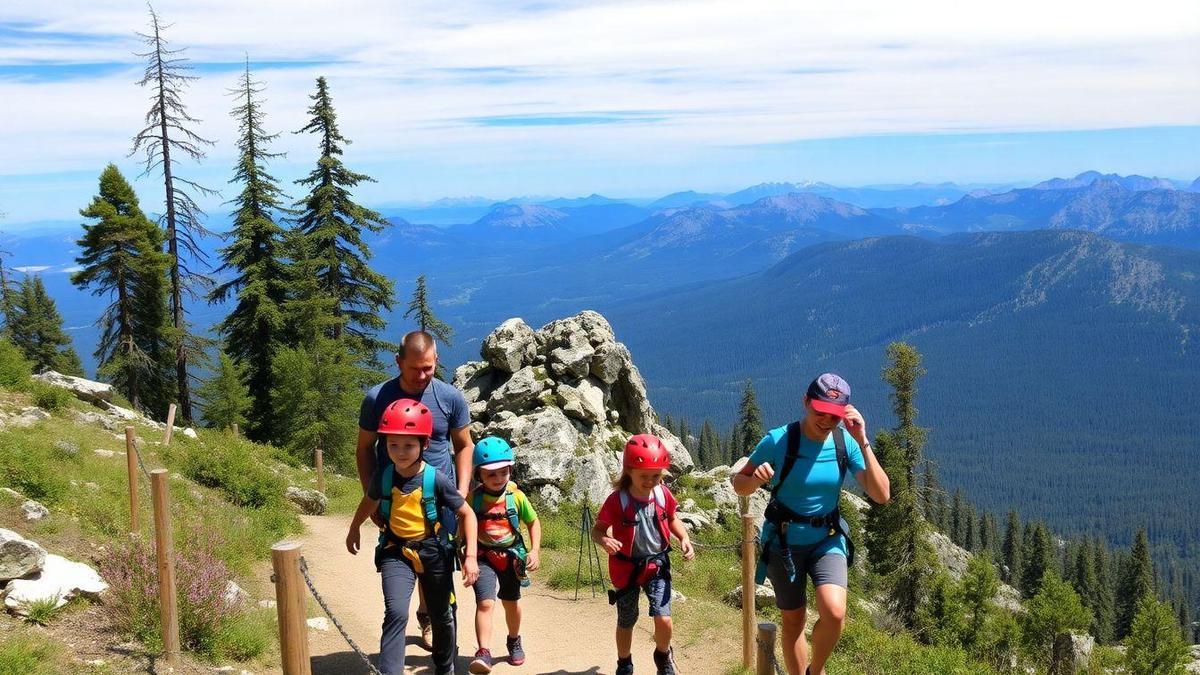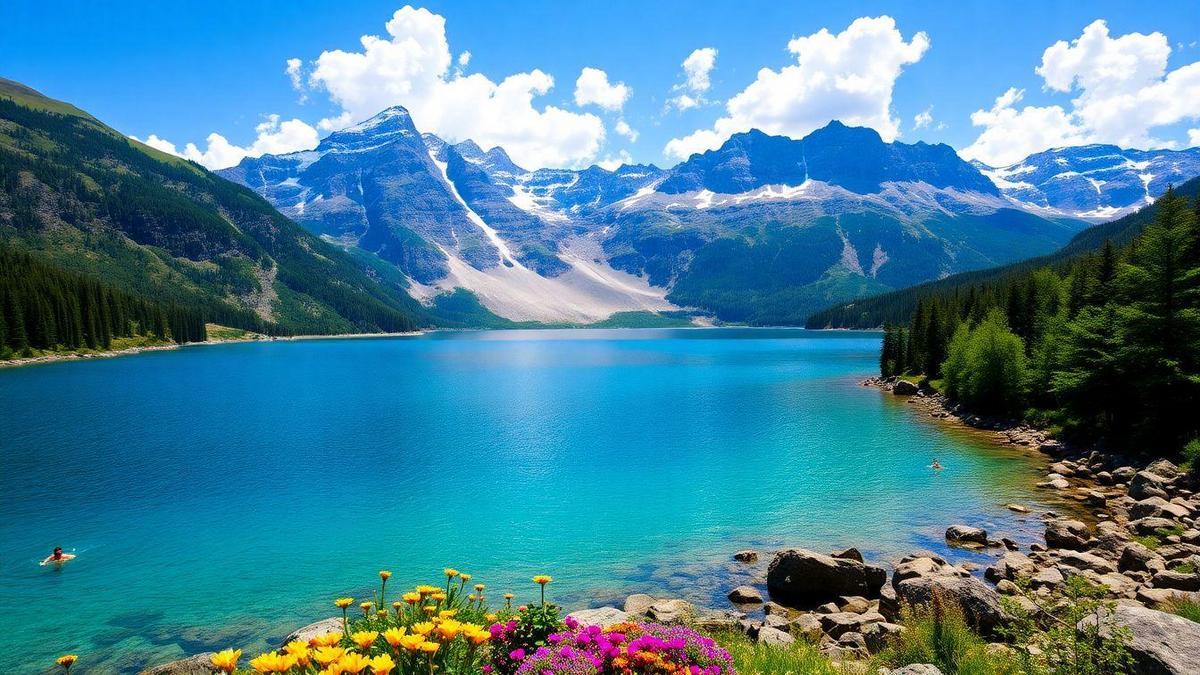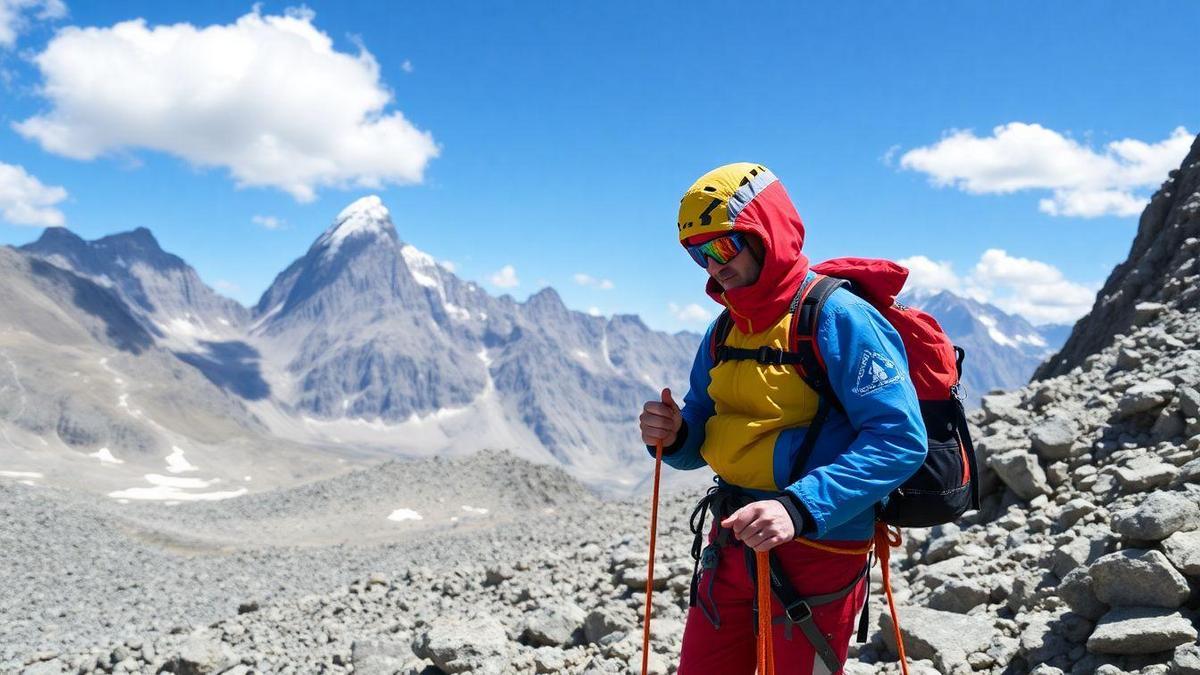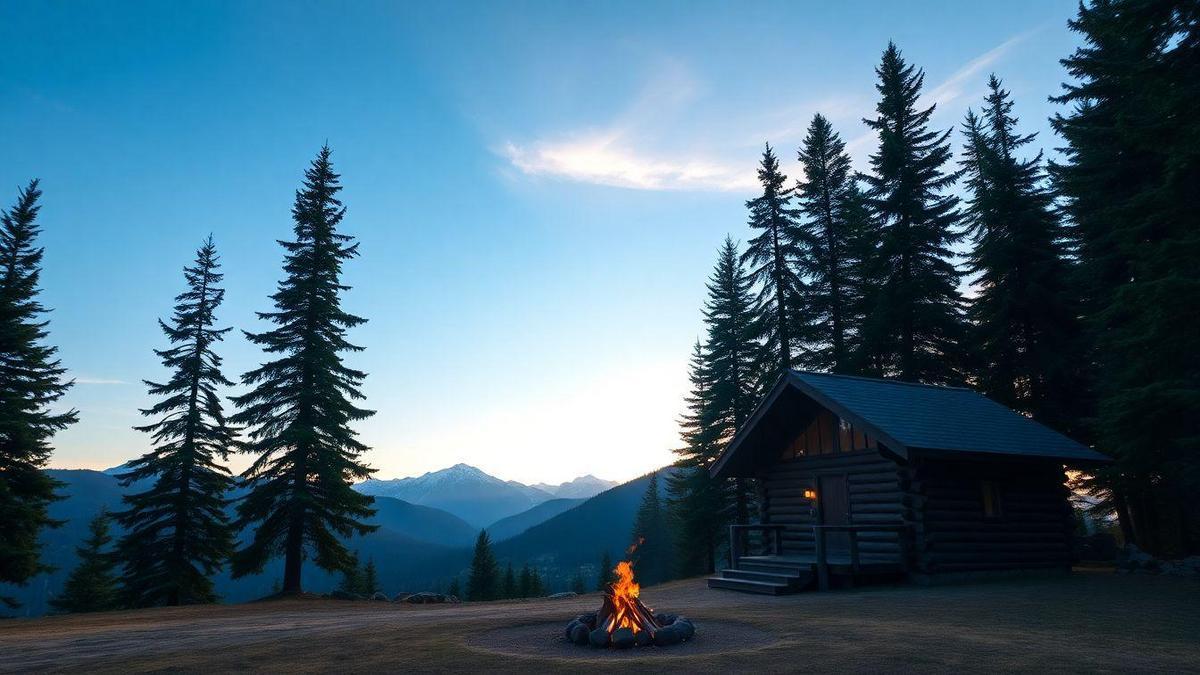
Understanding the Importance of Precautions for Mountain Climbing with Children
Why Safety Comes First in Family Hiking
When you think about taking your kids on a mountain hike, safety should always come first. Imagine the thrill of exploring nature together, but picture the worry if something goes wrong. Keeping your family safe not only allows you to enjoy the adventure but also builds trust and confidence in your children. They learn to respect nature and understand that being cautious is part of the fun.
The Risks of Mountain Climbing with Children
Climbing a mountain can be exciting, but it comes with certain risks, especially when kids are involved. Here are some key risks to keep in mind:
| Risk | Description |
|---|---|
| Injury | Falls, slips, or trips can lead to serious injuries. |
| Weather Changes | Sudden storms can catch you off guard. |
| Getting Lost | Trails can be confusing, and kids can wander off. |
| Fatigue | Kids may tire out faster than adults. |
How to Assess Your Child’s Readiness
Before you hit the trails, it’s important to assess your child’s readiness for mountain climbing. Here are some questions to ask yourself:
- Age and Size: Are they old enough and strong enough for the hike?
- Fitness Level: Can they handle walking long distances?
- Experience: Have they been on hikes before?
- Interest: Are they excited about the hike, or do they seem reluctant?
By considering these factors, you can make better decisions about the trails you choose and how to prepare your family for a safe and enjoyable experience. For tips on selecting the right trails, check out some beginner-friendly hiking trails.
Essential Gear for Kids in Mountain Climbing
Choosing the Right Climbing Gear for Children
When you plan a mountain climbing adventure with your kids, picking the right gear is key. Kids are not just smaller versions of adults; they need special equipment to keep them safe and comfortable. Consider their size, weight, and skill level. Gear that fits well can make a big difference. Here are some essentials to consider:
- Climbing Shoes: Look for shoes that fit snugly but are not too tight. They should provide good grip.
- Harness: A well-fitted harness is crucial. It should be easy to put on and take off.
- Climbing Helmet: Protecting your child’s head is essential. A lightweight helmet that fits properly is a must.
Must-Have Safety Equipment for Kids
Safety comes first when climbing. Here are some must-have safety items for your little adventurers:
| Safety Equipment | Purpose |
|---|---|
| Climbing Rope | For safety during ascents and descents |
| Carabiners | To secure gear and connect ropes |
| First Aid Kit | For minor injuries and emergencies |
| Whistle | To signal for help if needed |
These items are not just accessories; they are lifesavers. Make sure you have them before heading out, and consider the essential gear for outdoor adventures.
Tips for Fitting Gear Properly
Getting the fit right is essential. Here are some tips to help you:
- Try Before You Buy: Always let your child try on gear. They should be able to move comfortably.
- Check for Adjustability: Look for gear that can grow with your child. Adjustable straps can save you money in the long run.
- Regular Checks: Kids grow fast! Check their gear regularly to make sure it still fits well.
Remember, the right fit can help your child feel more confident and safe while climbing.
Age-Appropriate Climbing Activities for Families
Finding Suitable Trails for Children
When planning a family climbing trip, choosing the right trail is crucial. You want to find paths that match your child’s age and ability. Look for trails that are short, well-marked, and have gentle slopes. Here are some tips to help you find the perfect trail:
- Research local parks: Many parks have family-friendly trails.
- Check online resources: Websites and apps often list trails by difficulty.
- Ask experienced climbers: Local climbing groups can give great advice.
For family-friendly mountains to explore, consider some great weekend getaway options.
Fun Climbing Activities for Different Ages
Climbing can be a blast for kids of all ages! Here are some age-appropriate activities:
| Age Group | Activity Ideas | Description |
|---|---|---|
| Toddlers | Nature Walks | Short walks to explore plants and bugs. |
| Ages 5-7 | Rock Scrambles | Easy climbs on small rocks or boulders. |
| Ages 8-12 | Family Climbing Days | Set up a day for everyone to climb together. |
| Teens | Challenge Courses | Try out climbing walls or ropes courses. |
How to Make Climbing Enjoyable for Kids
Keeping climbing fun is key! Here are some ideas to make it enjoyable for your kids:
- Play games: Turn climbing into a game with fun challenges.
- Bring snacks: Pack their favorite treats for a mid-climb break.
- Take photos: Capture the moments to create lasting memories.
- Celebrate small wins: Cheer them on when they reach a milestone.
By keeping the experience light and enjoyable, your kids will look forward to every climb!
Outdoor Safety Tips for Kids While Climbing
Teaching Your Children About Wilderness Safety
When you take your kids into the great outdoors, wilderness safety is key. Start by having a chat about the importance of staying together. You can explain that wandering off can lead to getting lost. Use simple phrases like, “Always stay close to Mom or Dad.”
Teach them to recognize basic signs like trail markers. Show them how to read a map or use a compass. Make it fun! Turn it into a game where they can earn points for spotting trail signs. This way, they learn while enjoying the moment.
Common Hazards to Watch Out For
There are several dangers to keep in mind while climbing. Here’s a quick list of common hazards:
- Slippery rocks: Remind your kids to watch their step.
- Wild animals: Teach them to respect wildlife and keep a safe distance.
- Weather changes: Explain how quickly the weather can turn. Always check the forecast before heading out.
- Dehydration: Encourage them to drink water regularly, even if they don’t feel thirsty.
Creating a Safety Plan for Your Family
Having a safety plan is like having a map for your adventure. It gives you a clear path to follow. Here’s a simple table to help you create your plan:
| Safety Tip | Details |
|---|---|
| Emergency Contacts | Write down phone numbers and keep them handy. |
| Meeting Points | Choose spots to regroup if anyone gets lost. |
| First Aid Kit | Pack a small kit with band-aids and ointments. |
| Trail Etiquette | Teach kids to be polite to other hikers. |
By having a plan, you can enjoy your climb without worry. Remember, safety first means more fun for everyone!
Parental Guidance for Mountain Climbing Adventures
How to Lead by Example in Outdoor Safety
When you decide to take your children on a mountain climbing adventure, your actions speak louder than words. Show them how to be safe by following the rules yourself. Wear the right gear, like a helmet and sturdy shoes, and always check the weather before you head out. If you stumble or make a mistake, explain what happened and how to avoid it next time. This way, your kids learn that safety is important, and they’ll remember your example.
Communicating Safety Rules to Your Kids
Before hitting the trail, sit down with your children and talk about the safety rules. Make it fun! You could create a little game or use visuals to help them remember. Here are some key points to discuss:
| Safety Rule | Explanation |
|---|---|
| Stay on the Path | It keeps you safe from hidden dangers. |
| Don’t Rush | Take your time to avoid accidents. |
| Watch for Signs | Learn to recognize trail markers. |
| Stick Together | Always stay close to the group. |
| Listen to Your Guide | Follow directions for your safety. |
By discussing these rules, you help your kids understand why they matter. Make it a conversation, not just a lecture. Ask them questions and encourage them to share their thoughts. This way, they’ll feel involved and more likely to remember what they learned.
Encouraging Responsibility in Young Climbers
As your children grow, it’s important to teach them responsibility. Give them small tasks to handle on the climb, like carrying their own water or checking the map. This builds their confidence and makes them feel like part of the team. Praise them for their efforts, and remind them that every little action counts.
Real-life example: I once took my niece hiking, and I let her lead the way for a short distance. She felt proud and took extra care to follow the rules. It was a small step, but it made a big difference in how she approached the climb.
Preparing for Emergencies While Climbing
What to Include in Your Family’s First Aid Kit
When you’re heading out to climb a mountain, packing a first aid kit is essential. You want to be ready for anything that might happen. Here’s a list of important items to include in your kit:
- Adhesive bandages: For small cuts and scrapes.
- Gauze pads: To cover larger wounds.
- Antiseptic wipes: To clean injuries and prevent infection.
- Pain relievers: Such as ibuprofen or acetaminophen.
- Elastic bandage: For sprains or strains.
- Tweezers: To remove splinters or ticks.
- Scissors: For cutting tape or gauze.
- First aid manual: To guide you through emergencies.
Having these supplies can make a big difference if someone gets hurt. Remember, it’s better to be safe than sorry!
How to Handle Common Injuries in the Wilderness
Injuries can happen even to the best climbers. Knowing how to handle them can keep your family safe and sound. Here are some common injuries you might face and how to deal with them:
- Cuts and Scrapes: Clean the wound with antiseptic wipes, then cover it with a bandage.
- Sprains: Rest the injured area, apply ice, and wrap it with an elastic bandage.
- Blisters: Don’t pop them! Cover with a band-aid and let them heal naturally.
- Dehydration: Drink water and rest in a shady spot. If symptoms worsen, seek medical help.
By being prepared for these injuries, you can keep the fun going and avoid a mountain mishap!
Planning for Unexpected Events on the Trail
No one likes surprises, especially when climbing a mountain. But planning for unexpected events can help you stay calm. Here are some tips:
- Check the weather: Before you leave, look for any changes in the forecast.
- Tell someone your plan: Let a friend or family member know where you’re going and when you expect to return.
- Have a backup plan: Know alternative routes or safe spots to rest if things go sideways.
- Stay connected: If possible, carry a fully charged phone or a GPS device.
These steps can help you navigate the trail with peace of mind, knowing you’re ready for whatever comes your way.
Frequently Asked Questions
What are the main precautions for mountain climbing with children?
Always check the weather. Make sure it’s safe. Also, choose easy trails that match your child’s ability.
How can I ensure my child stays safe on the mountain?
Keep an eye on them at all times. Make them stay close. Use a safety harness if needed.
What should my child wear while climbing?
Dress them in layers. Use breathable clothes and a good pair of hiking shoes. Don’t forget a helmet for extra safety.
How do I keep my child hydrated during the hike?
Bring enough water for both of you. Teach your child to drink regularly. This helps avoid dehydration.
What are some first-aid tips for mountain climbing with children?
Pack a small first-aid kit. Know how to treat common injuries like cuts or scrapes. Always keep your phone handy for emergencies.
Precautions for Mountain Climbing with Children: Safety Tips
In summary, when planning your mountain climbing adventure with children, always prioritize precautions for mountain climbing with children safety tips. Ensure you have the right gear, understand the risks, and maintain open communication about safety rules. By following these guidelines, you can create a memorable and safe climbing experience for your family. For more family-friendly climbing options, explore some scenic mountains to climb.


